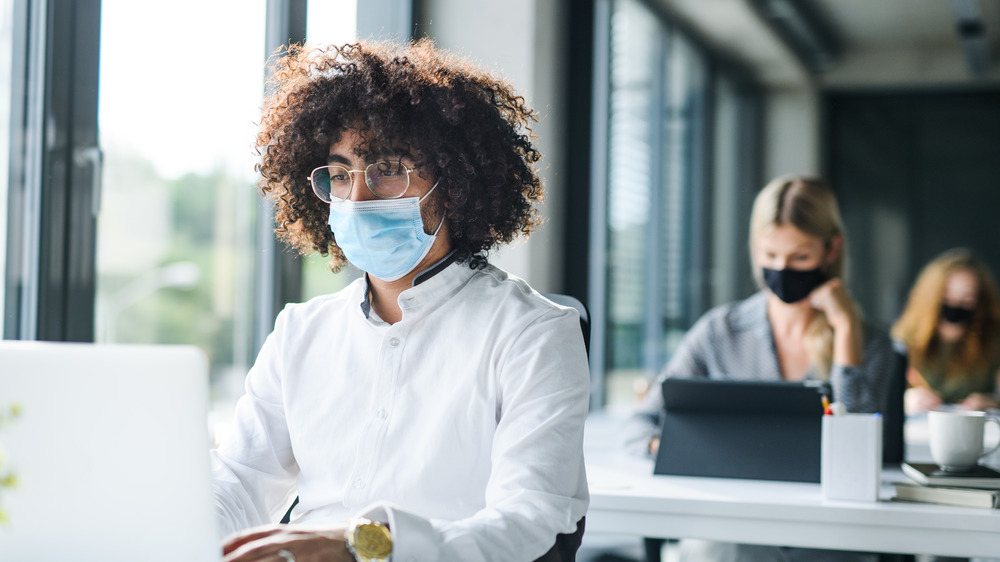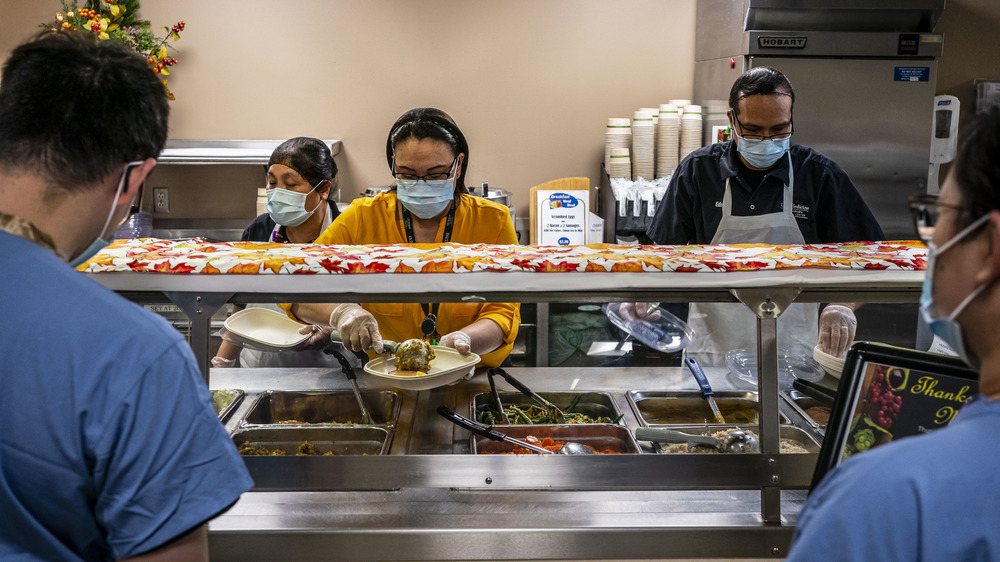Think Twice Before Using This Room At Work
The break room and lunchroom might not be the safest places to eat or clear your head during the coronavirus pandemic, as contract tracing shows these spots linked to the spread of COVID-19 in workplaces around the country, officials say (via The Wall Street Journal).
Contract tracing is a way for health department officials to slow the spread of the virus by asking whether anyone was within six feet of an infected person for 15 minutes or more and recording their symptoms, according to the U.S. Centers for Disease Control and Prevention (CDC). After more than 900 staff members at the Mayo Clinic in Rochester, Minnesota, became infected in November, contract tracing there found that a number of work-related exposures occurred in lunch rooms and break rooms, said Laura Breeher, an occupational medicine specialist there.
Community spread outside the Mayo Clinic also played a role in the number of infections, the Wall Street Journal said. Regardless, employers have noticed that workers are vulnerable to COVID-19 in break rooms and lunchrooms, which are "often small, indoor spaces where people let down their guard to socialize" and will remove a mask to eat or drink.
The CDC encourages extra spacing in lunchrooms and break rooms
Jason Alfonso, a steel mill worker in Pittsburg, California, told The Wall Street Journal that his workplace reduced the capacity of the break rooms from six to two people because of the pandemic. The mill mandates wearing masks; those visiting the break room sit six feet apart, and they're encouraged to spray down tables with a bleach mixture after eating, he said. Having lost two family members to COVID-19, Alfonso added that he understands the precautions.
The CDC suggested in October that all employers conduct a thorough assessment of any areas that could increase the spread of COVID-19. These include places where workers typically have close contact with others, such as waiting and check-in areas, meeting rooms, the cafeteria, break rooms, locker rooms, parking lots, and routes for entry and exit.
The agency noted several ways to reduce transmission of the virus, such as modifying or adjusting workstations, furniture, and other seating to maintain social distancing, and using signs, tape, or other visual cues on the floor to indicate social distancing when such modifications aren't possible.
The CDC also recommended replacing "high-touch communal items" such as coffee pots and bulk snacks with prepackaged, single-serving items and encouraging staff to bring their own beverages. Improving ventilation throughout the building with the help of an HVAC professional also could be beneficial, the CDC said.


